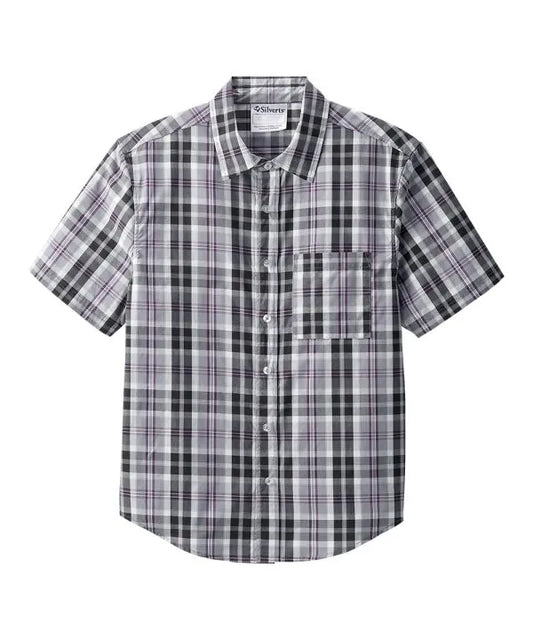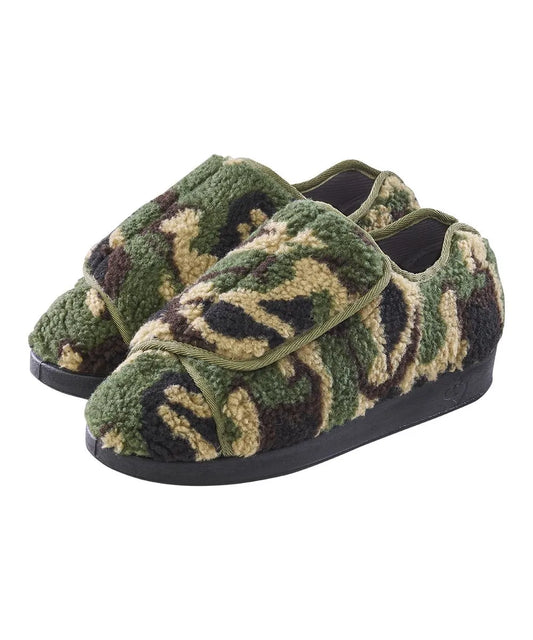In recent times, the field of adaptive clothing has undergone a remarkable transformation, owing to the integration of high-tech fabrics. This synergy between fashion and technology has given rise to a new era of smart designs, tailored to meet the unique needs of individuals with diverse disabilities. With each passing day, advancements in high-tech fabrics are making a profound impact on the lives of those facing physical, sensory, or cognitive challenges, revolutionizing the very concept of adaptive clothing.
The adoption of high-tech fabrics in adaptive clothing is driven by a desire to empower individuals with disabilities, providing them with functional, comfortable, and stylish options that enhance their daily living experiences. These fabrics have emerged as a beacon of hope, promising newfound independence, increased mobility, and improved quality of life for millions of people around the globe.
Comfort and sensory enhancements lie at the heart of high-tech fabric integration in adaptive clothing. For individuals with sensory sensitivities, the texture, weight, and breathability of fabrics can significantly impact their comfort levels. Advanced materials are now designed to be soft, hypoallergenic, and moisture-wicking, catering to the specific needs of those who may experience discomfort due to certain disabilities. Moreover, innovative pressure-sensitive fabrics conform to the wearer's body, alleviating discomfort caused by ill-fitting garments and promoting an overall sense of well-being. The blog "Adaptive Clothing: 15 Innovative Ideas to Enhance Comfort" explores creative solutions to improve comfort in adaptive clothing, fostering inclusivity and empowering individuals with diverse needs.
What is Adaptive Clothing?
Adaptive clothing refers to garments specifically designed to accommodate the unique needs and challenges faced by individuals with disabilities or limited mobility. This type of clothing aims to enhance comfort, ease of dressing, and overall functionality for people with various physical, sensory, or cognitive impairments. In this essay, we will delve into the significance of adaptive clothing, its benefits, and its role in promoting inclusivity and independence.
Adaptive clothing serves as a lifeline for individuals with disabilities, offering a range of features tailored to their specific requirements. One of the key elements of adaptive clothing is its ease of use. Traditional clothing may present difficulties for individuals with limited dexterity, muscle weakness, or joint stiffness. However, adaptive designs incorporate features like Velcro closures, magnetic buttons, or easy-grip zippers, simplifying the dressing process and minimizing frustration.
Comfort is another crucial aspect of adaptive clothing. The fabrics used are selected for their softness, hypoallergenic properties, and breathability. These choices are particularly important for individuals with sensory sensitivities, ensuring that the clothing does not cause discomfort or irritation. Additionally, adaptive clothing takes into consideration the need for adjustability, offering options like elastic waistbands or customizable straps to accommodate fluctuating body shapes.
Mobility and range of motion are fundamental for maintaining independence and participating in daily activities. For individuals with mobility impairments or conditions like arthritis, adaptive clothing may incorporate features such as reinforced seams, open-back designs, or tear-away panels. These adaptations allow for easier dressing and undressing, while still providing the necessary support and coverage.
Adaptive clothing is not limited to physical disabilities but also caters to those with sensory or cognitive challenges. For instance, garments may feature sensory-friendly tags, seams, and labels, reducing sensory overload for individuals with autism or sensory processing disorders. Additionally, adaptive clothing can be designed to be calming and soothing, promoting a sense of security and comfort.
What are High-Tech Fabrics in Adaptive Clothing?
High-tech fabrics in adaptive clothing refer to innovative and technologically advanced materials used to create garments tailored to the specific needs of individuals with disabilities or limited mobility. These fabrics are designed to enhance comfort, functionality, and independence for wearers, providing practical solutions to the challenges they may face in their daily lives. High-tech fabrics are at the forefront of the adaptive clothing industry, incorporating cutting-edge technology and materials science to create garments that go beyond traditional designs.
Some common features of high-tech fabrics in adaptive clothing include:
-
Breathability
o Adaptive clothing often employs breathable fabrics that allow air circulation, preventing overheating and promoting comfort. Breathable materials are essential for individuals with sensory sensitivities or those who are prone to skin irritation. June Adaptive's Men's Open-Front Underwear 3-Pack offers an exceptional blend of comfort and breathability, providing individuals with disabilities a stylish and inclusive clothing solution that prioritizes their ease and well-being.
Men's Open Front Underwear, 3-pack
-
Stretch and Flexibility
o High-tech fabrics with stretch and flexibility properties enable adaptive clothing to conform to the wearer's body without causing discomfort. This feature is particularly valuable for individuals with limited mobility or joint stiffness, as it allows for ease of movement. The June Adaptive Men's Side-Zipper Pants offer a perfect blend of convenience and flexibility with their functional side zipper design, allowing for easy dressing and enhanced mobility for individuals with disabilities.
-
Easy-Closure Systems
o Adaptive clothing often employs easy-closure systems, such as Velcro, magnetic buttons, or snap fasteners, to simplify the dressing and undressing process for individuals with limited dexterity. The June Adaptive Unisex Recovery Top with snap closures offers comfort and convenience for individuals with disabilities, making dressing and undressing easier.
Unisex Recovery Top with Snap Closures
-
Sensory-Friendly Features
o High-tech fabrics in adaptive clothing may be designed to minimize sensory overload by avoiding scratchy tags, rough seams, or irritating textures, benefiting individuals with sensory processing disorders or autism.
Why are high-tech fabrics in adaptive clothing important?
-
Enhanced Comfort
o High-tech fabrics offer superior comfort compared to traditional materials. Their moisture-wicking and breathable properties keep wearers dry and cool, reducing the risk of skin irritation or discomfort caused by trapped sweat. For individuals with sensory sensitivities, soft and hypoallergenic fabrics ensure a comfortable wearing experience.
-
Improved Mobility and Functionality
o High-tech fabrics in adaptive clothing are engineered to enhance mobility and range of motion. Whether it's reinforced seams, open-back designs, or pressure-sensitive materials, these features enable wearers to move with greater ease and perform daily activities more efficiently, improving overall functionality in their lives.
-
Health Monitoring and Safety
o Smart sensors integrated into high-tech fabrics allow for health monitoring, detecting vital signs, body temperature changes, or movements. These sensors can serve as early warning systems, alerting caregivers or medical professionals in case of emergencies. This technology enhances safety and provides peace of mind for both wearers and their loved ones
-
Inclusivity and Fashion Forward
o High-tech fabrics have revolutionized the concept of adaptive clothing, making it more fashionable, inclusive, and trendy. With a focus on aesthetics and style, adaptive clothing can now cater to individual preferences and showcase the wearers' personality, breaking down societal barriers and promoting inclusivity.
-
Sensory-Friendly Solutions
o High-tech fabrics address the specific sensory needs of wearers with conditions such as autism or sensory processing disorders. Sensory-friendly features like smooth seams, soft textures, and non-irritating materials contribute to a calmer and more comfortable sensory experience.
-
Tailored Solutions
o High-tech fabrics allow for personalized and tailored solutions for individuals with diverse disabilities. Designers can collaborate with wearers to understand their specific needs and create garments that suit their unique challenges, ensuring a better fit and functionality.
-
Progress and Innovation
o The integration of high-tech fabrics in adaptive clothing represents the continuous progress and innovation in the field of assistive technologies. As technology evolves, so do the possibilities for improving the lives of individuals with disabilities through adaptive clothing.
Conclusion:
Smart designs featuring high-tech fabrics have revolutionized the adaptive clothing industry, offering immense benefits to individuals with various disabilities. These fabrics not only enhance comfort and mobility but also facilitate communication, integration, and inclusivity. As society moves towards greater acceptance and understanding of disabilities, investing in the development and widespread adoption of high-tech fabrics in adaptive clothing is crucial to empower individuals with disabilities and promote a more inclusive world.


















